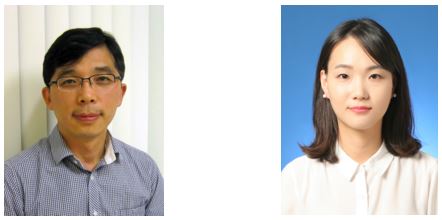Media Center
A multimedia mosaic of moments at GIST
GIST Excellence
[Press Release] Research team led by Professor Ji-Woong Park develops a new membrane to selectively block CO2
- 엘리스 리
- REG_DATE : 2016.01.11
- HIT : 1153
Research team led by Professor Ji-Woong Park
develops a new membrane to selectively block CO2
Results of new process to create covalent molecular networks
with micropores less than 2 nm wide published in Angewandte Chemie

Researchers at the Gwangju Institute of Science and Technology (GIST) have developed a new process to create covalent molecular networks whose membrane structure exhibits high permeability for gas molecules with reverse selectivity of carbon dioxide, which is a significant greenhouse gas that contributes to global warming.
Covalent molecular networks have micropores of less than 2 nm in width. This characteristic gives covalent molecular networks the potential to be used for molecular separation and storage or even as catalysts for chemical reactions. However, to be successfully used for these applications, the membrane-based covalent molecular networks must be free of structural defects, which is extremely difficult to accomplish with insoluble network materials. One current approach is to deposit microporous particles on to a porous polymer support. Unfortunately, approach yields poor gas permeability because of poor distributions of the particles and the weak interfacial contact between the particle and polymer matrix.
To overcome these issues, a research team led by Professor Ji-Woong Park of the School of Materials Science and Engineering have synthesized a microporous covalent network membrane derived from co-continuous blends of a porogenic urea network and a polyimide. The urea-based networks in the polyimide matrix could be transformed thermally while selectively expelling small molecular fragments to form a new network with reticular microporous pathways that exhibited a high permeability to gas molecules. The resultant membranes exhibited reverse-selective separation behaviors by blocking CO2 while transporting N2.
Their research entitled "In situ Generation of Reticulate Micropores through Covalent Network/Polymer Nanocomposite Membranes for Reverse-Selective Separation of Carbon Dioxide" was authored by Eunkyung Jeon, Dr. Su-Young Moon, Jae-Sung Bae, and Professor Ji-Woong Park and published in the international edition of Angewandte Chemie on December 10, 2015. The research was supported by grants from the Korea CCS R&D Center and the Korean Ministry of Science, ICT, and Future Planning.

(Figure 1,) Cross-sectional TEM images of the final RUN/PI films obtained after treatment at Tr=270 C at different values of Wp: a) Wp=0.4, b) Wp=0.6, and c) Wp=0.9. Cross-sections 60 nm thick were obtained from the films using a microtome. RUN domains were stained with RuO4 and appear dark.
Professor Ji-Woong Park said, "This method of creating covalent molecular networks is a new approach that significantly improves the performance of reverse selective gas separation, especially with regards to carbon dioxide. So our approach has useful potential for other CO2-containg gas mixtures, and it should be widely applied in the field of environmental sciences."